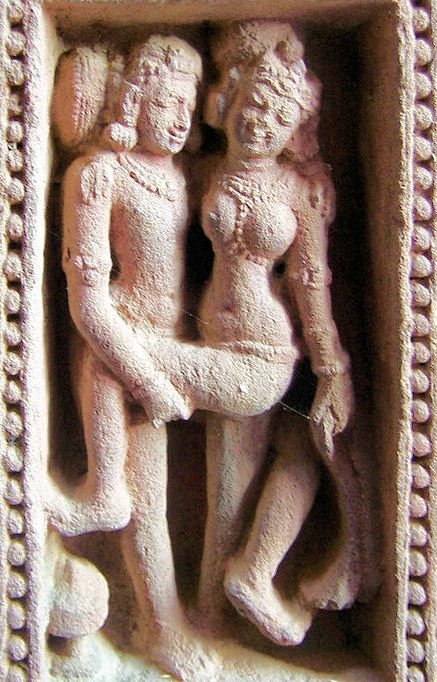n the preface of Kama Sutra, Vatsyayana cites the work of previous authors based on which he compiled his own Kama Sutra. He states that the seven parts of his work were an abridgment of longer works by Dattaka (first part), Suvarnanabha (second part), Ghotakamukha (third part), Gonardiya (fourth part), Gonikaputra (fifth part), Charayana (sixth part), and Kuchumara (seventh part). Vatsyayana's Kama Sutra has 1250 verses, distributed in 36 chapters, which are further organised into seven parts.[11] According to both the Burton and Doniger[12] translations, the contents of the book are structured into the following seven parts:
- General remarks
five chapters on contents of the book, three aims and priorities of life, the acquisition of knowledge, conduct of the well-bred townsman, reflections on intermediaries who assist the lover in his enterprises. - Amorous advances/sexual union
ten chapters on stimulation of desire, types of embraces, caressing and kisses, marking with nails, biting and marking with teeth, on copulation (positions), slapping by hand and corresponding moaning, virile behaviour in women, superior coition and oral sex, preludes and conclusions to the game of love. It describes 64 types of sexual acts. - Acquiring a wife
five chapters on forms of marriage, relaxing the girl, obtaining the girl, managing alone, union by marriage. - Duties and privileges of the wife
two chapters on conduct of the only wife and conduct of the chief wife and other wives. - Other men's wives
six chapters on behaviour of woman and man, how to get acquainted, examination of sentiments, the task of go-between, the king's pleasures, behaviour in the women's quarters. - About courtesans
six chapters on advice of the assistants on the choice of lovers, looking for a steady lover, ways of making money, renewing friendship with a former lover, occasional profits, profits and losses. - Occult practices
two chapters on improving physical attractions, arousing a weakened sexual power.